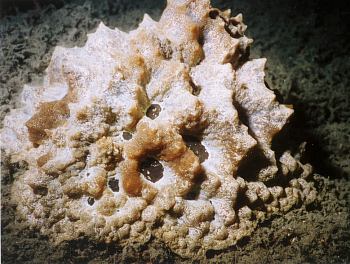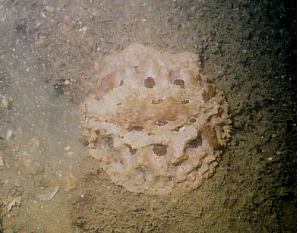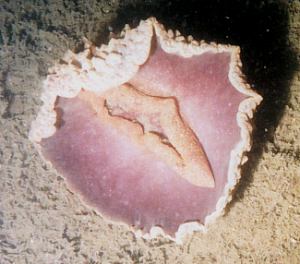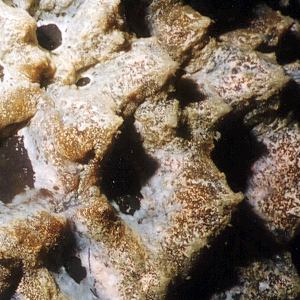Trippa spongiosa from Sydney
November 5, 2002
From: Ian Simpson

Dear Dr Rudman,
I was hoping that you would be able to identify this opisthobranch. These photos were taken on a night dive at Parsley Bay in Sydney's Eastern Suburbs on 13th January 2002. The depth was approximately 6 metres. Visibility was 4 metres at best. The animal had an almost round base approximately 20cm in diameter. It was first spotted on a night dive one week earlier on 7th January, 2002. However, just as we spotted it my buddy's torch failed and we aborted the dive. A week later we returned to decide whether or not we'd seen an old piece of sponge or an opisthobranch on steroids. On the second dive we found it very close to where it had been a week earlier (ie. within a few metres). It was on an algae covered rock, and the surface of the rock was on about a 45 degree angle to horizontal. We observed the specimen for around one minute before moving in closer to take the photos. During this time it did not move at all, however we were able to determine that it was a living specimen due to it retracting and subsequently extended both its rhinophores and gills. The specimen was symmetrically patterned. There was no obvious 'bare patch' on the rock so I cannot day whether or not it was feeding on the algae. I suspect that it is a Trippa spongiosa.
Are you interested in hearing of further sightings of this species in Sydney Harbour? Not that I have any at the moment, but am planning to go back there soon.
Thanks in advance,
Ian Simpson
barts_computer@hotmail.com



Dear Ian,
Yes this is the well-named Trippa spongiosa. The sponge-like dorsal appearance, including the pits with dark bases, are very characteristic, and range in colour from this khaki brown to a deep green. The underside of the mantle with its uniform purple-brown colouration is also a useful character. Even though it grows quite large, and occurs throughout the Indo-West Pacific, there are not that many records of it being found. I suspect this is because of its excellent camouflage rather than it being a rare species. I am certainly interested in further sightings, but I am particularly interested in observations and photos of any species of opisthobranch 'doing something' - such as laying eggs, feeding etc. In this case it will be feeding on some sponge, but just which species would be of great interest.
Best wishes,
Bill Rudman
Related messages
-
Atagema spongiosa from Lord Howe Island
From: Margaret Crook, February 15, 2008 -
Atagema spongiosa? from Anilao, Philippines
From: Reindert Grooters and Mieke Snoek, August 7, 2006 -
Big purple-footed nudibranch from Singapore
From: Ron Yeo, June 28, 2006 -
Atagema spongiosa? from the Philippines
From: Erwin Koehler, December 21, 2002 -
Trippa spongiosa from Sth Korea
From: Dong Bum, Koh, August 11, 2002 -
Trippa spongiosa from Christmas Island
From: W.B. Rudman, May 18, 2002
